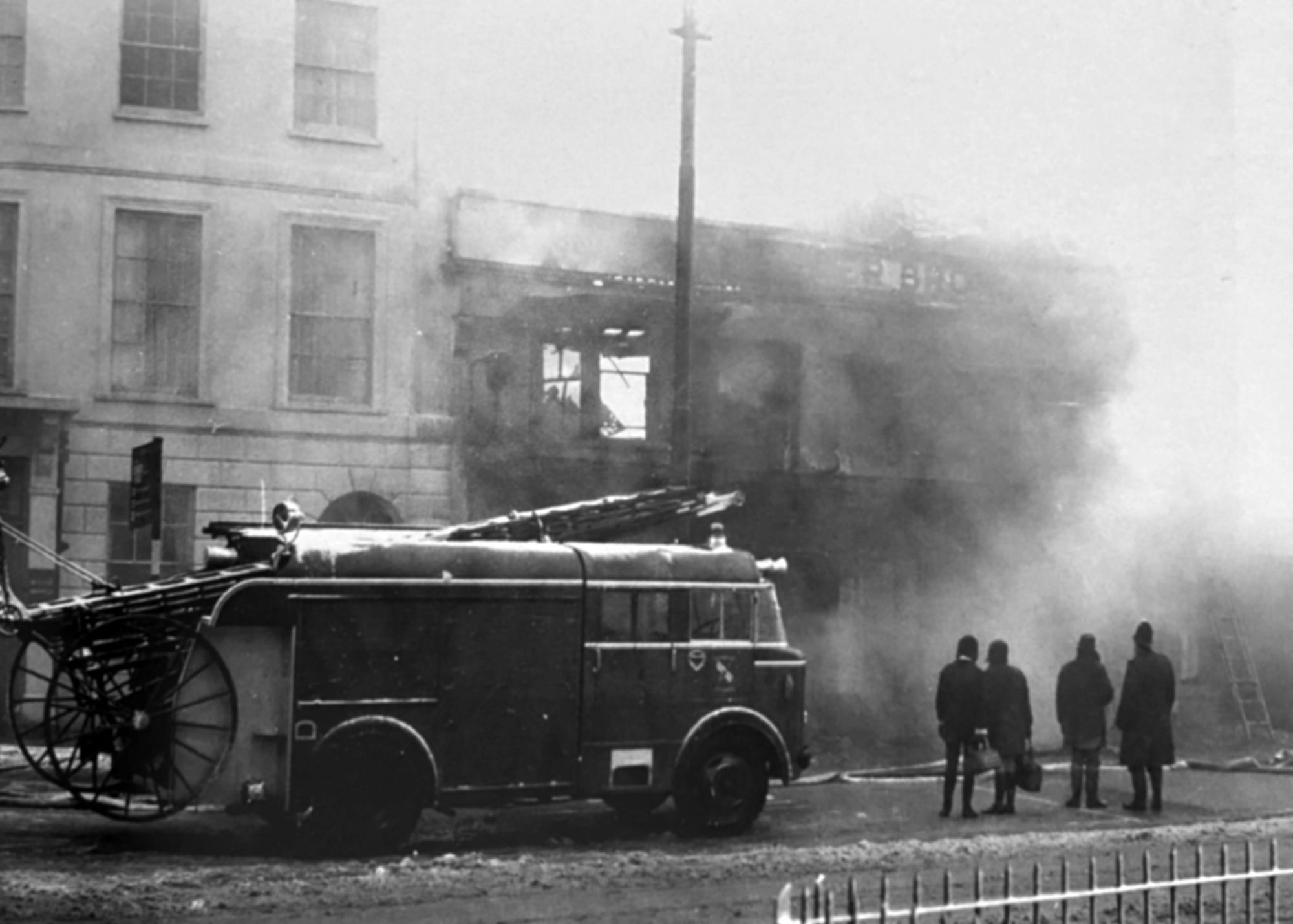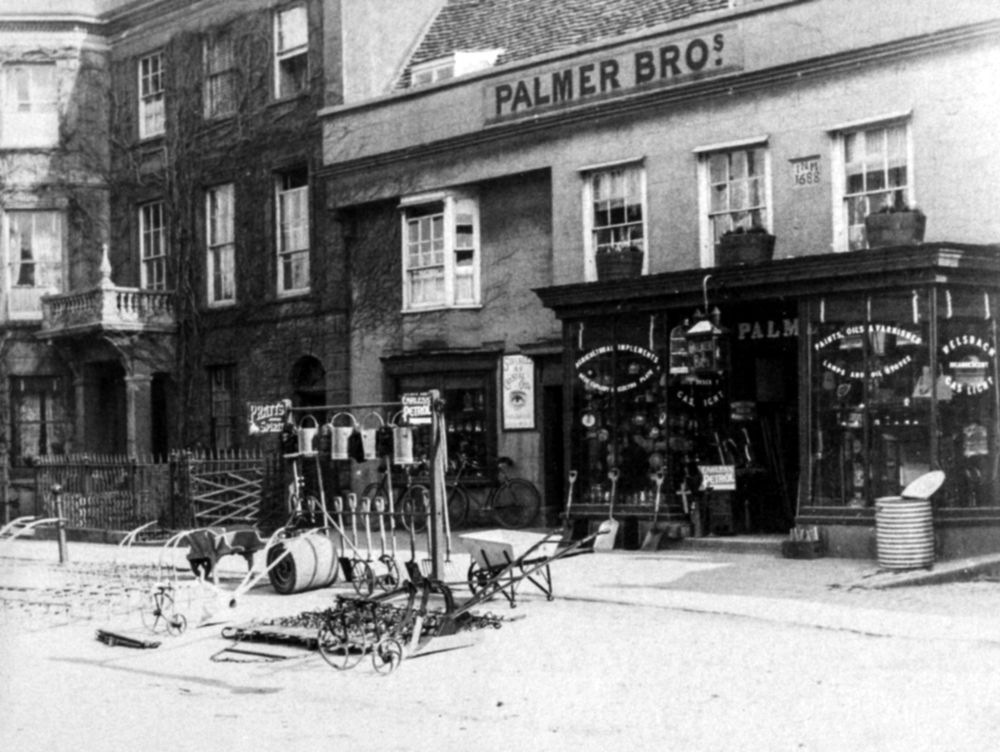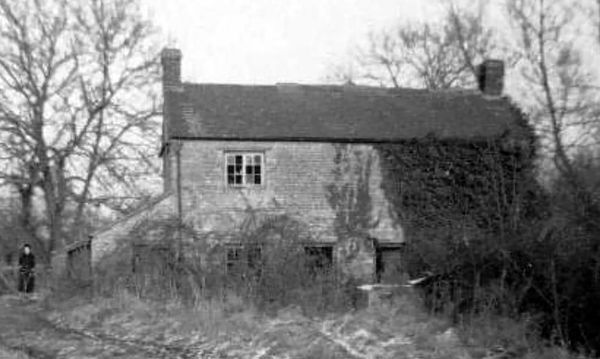Palmer’s and Ashmore’s
The shop next to the White Hart, at 6 and 8 Sheep Street, used to be the home of a long line of ironmongers. The business that would become Palmer Bros was initially opened there by Thomas Gibbs in the early 19th century, he was later joined by his cousins, John and William Palmer. Two of three brothers who together became one of the most successful trading families in Victorian Bicester.
By the time of his death in 1877, William had amassed a fortune of almost £20,000 (roughly £2 million today), held controlling interest in the ironmongery business and was the managing director of the Bicester Gas Company. He and his wife, Elizabeth, were the original owners of the Garth, then known as the Poplars, and probably had the mansion specially built just before William’s death. But from William’s death until her own in 1918, Elizabeth lived at Rose Cottage, a large Victorian property that stood in its own grounds next to the London Road entrance to the Garth.
Elizabeth retained William’s controlling interest in the ironmongery business after his death, but the day to day running of the business was taken over by William’s nephews, William Gibbs Palmer and Edward Arthur Palmer. The building had a walled garden at the back where William Gibbs Palmer used to grow his prize-winning grapes and apricots.
Palmers advertised themselves as “general and furnishing ironmongers, cutlers, braziers, iron and tin plate workers, bell hangers, gas fitters, and agents for agricultural implements.” Their shop sold a variety of goods including lamps, ovens, cutlery, paint and petrol. They also acted for many years as agents for both Norwich Union fire and life insurance, and the General Hail Storm Insurance Company, providing cover to farmers in the event of damage to their crops.
In 1910 Elizabeth sold the business to Charles Ashmore, who had been working for the company for many years. Originally from St Ives in Huntingdonshire, Charles moved to Bicester and married his wife, Priscilla, in 1882. They first lived in King’s End but moved in over the shop when Charles brought the business and lived there together until Charles’s death in 1928.
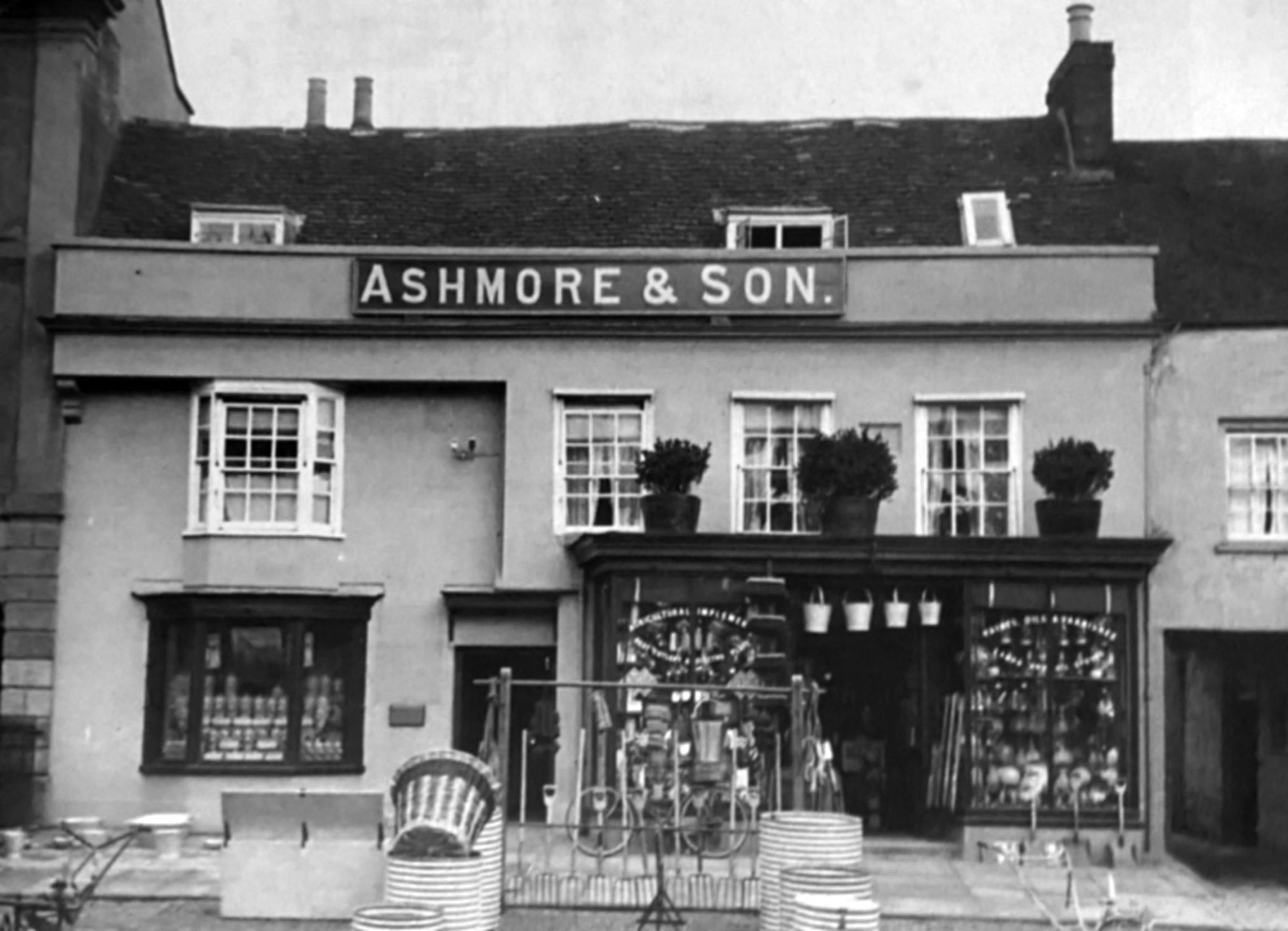
Their son, Robin, then took over the business and ran it until his death in 1943. He was then succeeded by his son, Roland, and Roland’s wife, Jean, who eventually passed it on to their two daughters, Mary and Pat. They ran it together with Mary’s Husband, Clifford Carter, until the shop closed in 2006.
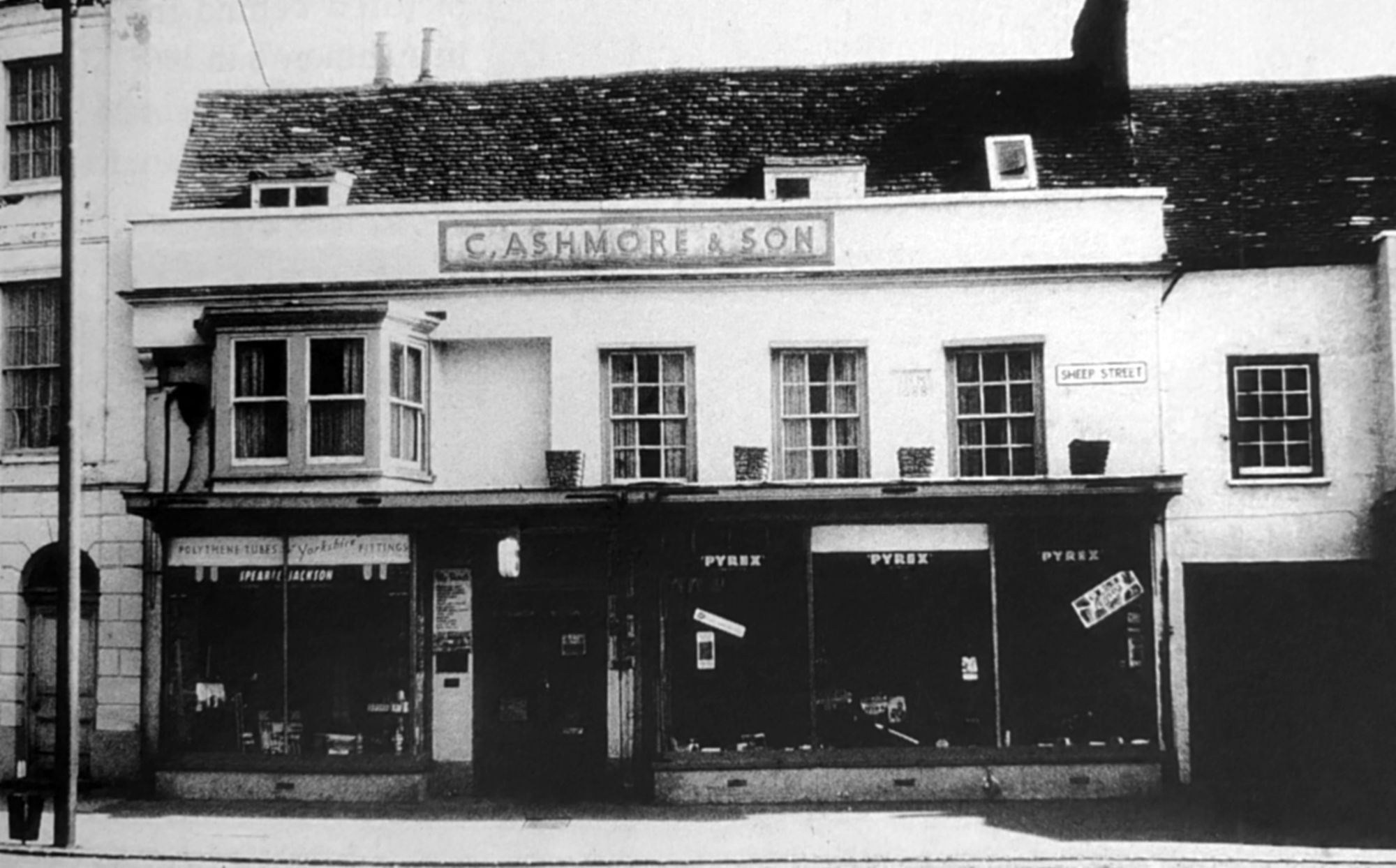
The original building was built in 1688 by the Burrows family and probably functioned as an ironmonger’s right from the beginning. Gabriel and John Burrows both issued their own trade tokens in the 1660s and their family also had ironmonger’s shops in Oxford and Thame.
But the building that stands there today was built in 1969, after the original building burnt down. The fire engulfed the building during a snowstorm in the early hours of 20th February 1969. The heat of the fire was so intense that it melted the brass weights of the weighing scales and buckled Pyrex glass plates that were on display. To quell the fire the many fire crews in attendance had to lay an additional hose through Market Square to bring water from the open-air swimming pool near the Causeway. According to a report in the Bicester Advertiser, smoke blanketed Sheep Street entirely and many local residents had to be evacuated. The damage was estimated at the time at over £100,000.
